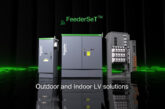
Paul Dawson from electrical accessories and consumables specialist, Niglon, discusses why the 18th Edition regulations should mean we see SPDs installed as standard across domestic and commercial projects.
Surge Protection Devices (SPDs) are nothing new. Indeed many contractors already fit SPDs as a best practice approach to electrical safety and an effective way of protecting electrical equipment from surges in current or transient voltages, often caused by lightning. As climate change brings us increased incidence of ‘extreme weather events’, such protection looks set to become ever more important, particularly in view of the number of sophisticated and expensive electrical devices in our homes and workplaces.
Niglon has offered a popular range of SPDs for several years as part of our wide-ranging circuit protection portfolio and this has always been an integral part of our electrical safety portfolio. Following publication of the 18th Edition in July, the use of SPDs looks set to increase and it’s vital that contractors select the right quality and specification of SPD to meet the needs of their project.
What’s changed?
While the 18th Edition doesn’t make it mandatory to install SPDs in new build and refurbishment projects, it does make it harder to avoid fitting them. From January, if you choose not to install an SPD, you must carry out a comprehensive risk assessment to justify why you’ve taken that decision and compile detailed additional information.
This information includes the length of the cables entering the building from overhead lines, the length of the cables entering the building from underground networks and from the length of the cables entering the building from the final electricity supply point. It is likely that this data will only be available from the relevant utility company, which will probably involve applying for the figures and waiting for a response. It may even incur an administration fee.
Consequently, while the installation of SPDs is advised rather than required by the 18th Edition, it is clear that the cost and procurement of a relatively low-priced and widely available safety item is a small consideration when compared to the time required for the risk assessment and supplementary information needed to avoid it.
And that’s before we even enter into a discussion about the level of protection SPDs offer for expensive electrical equipment or the safety of the occupier’s family (in a domestic property) or staff (in commercial premises).
While the addition of SPDs to an installation does have cost and time implications for contractors, therefore, the benefits SPDs provide make this an easy sell to your clients.
Selecting the right solution
For most domestic properties, the SPD will be installed within the consumer unit, enabling isolation of the property in the event of a surge and protecting equipment and occupants from rogue voltage.
For commercial properties, assessing the requirements of the installation is more complex, because the SPD requirement will be based on the number and location of interfaces with the incoming current. For example, if the building has an internal plant room, an SPD will be required on the switch board here but you may also need to install an additional unit to serve any plant located on the roof where the cable re-enters the building.
It’s also vital to select the right SPD to meet your needs. The Niglon catalogue, also available on our website, provides a simple reference guide to help you ask the right questions when selecting an SPD and your wholesaler should also be able to recommend the best fit choice to suit the project.
The first questions to ask are whether the building has lightning protection, an overhead power supply or a metal roof, as this will help you determine the level of risk. You should also be aware of the type of earthing system installed and whether the building has a single phase or three phase electrical supply.
For commercial installations, it’s also useful to know what sensitive electrical equipment will be installed within the building, where it will be located and what the supply arrangements will be. Ideally, this equipment should be located within a 10m cable distance of the SPD.
Safety-conscious
In the UK, electrical safety standards are high and electrical networks are reliable, reducing the risk of surges. However, any level of risk needs to be managed to protect property and safeguard people, so increased use of SPDs is an investment in a safer future at home and at work.
For more information about the range of surge protection devices available from Niglon visit: www.niglon.co.uk










